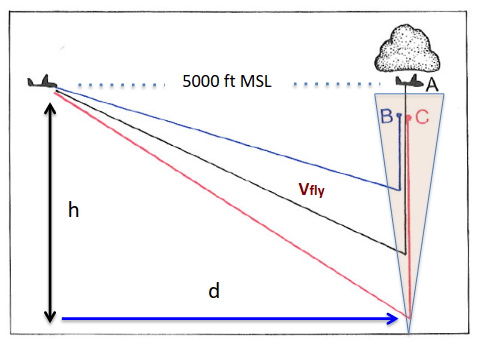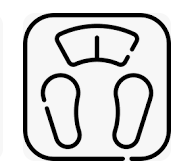The following Chapters is dedicated to the setup elements as there are in the device in English language. Because of that those elements are only translated from English in the table of contents here, not in the headlines or select lists in the following chapters about the setup.
MC #

0.5 m/s
Here the MacCready value (MC) can be set from 0 in 0.1 m/s steps to 9.9 m/s. After confirming with a short press, the Vario is immediately back in normal operation. The MC value can be described as an Optimum Airspeed Selector, according to the mathematics developed by Paul MacCready. This crosscountry “airspeed selector value” is indicates the optimum speed at which a sailplane should be flown between thermals. In the picture on the right, case A shows the optimum setting, B a too low and C a to high MC setting.
Bugs #

0 %
Degradation of the flight polar by insects can be adjusted via the parameter Bugs (insects). Here, the coefficients of the polar parabola a0, a1, and a2 are worsened according to the percentage. The flight polar can be deteriorated by this parameter in percentage terms. Whereby the absolute, the linear, as well as the quadratic coefficient are degraded, which equates to a greater degradation at higher speeds. The procedure is identical to the polar degradation procedure used in XCSoar, and is the common procedure for accounting for insects in glider polars.
Maximum degradation is 50% in accordance with XCSoar. Values like 10-20% are realistic for modern profiles. However, older profiles that are more sensitive to rain and mosquitoes, e.g with a LS3, Kestrel or Nimbus 2, can largely exhaust the value range with very heavy soiling.
Ballast #

80 liters
39.00 kg/m2
The water ballast can be set in the ballast dialog. In addition, the wing loading resulting from the additional ballast is displayed. 1 liter of water normally corresponds to 1 kg of ballast.
Example: A glider with a wing area of 10 m2 has a setup weight of 260 kg, the pilot weighs 80 kg, 100 liters of water (100 kg) are in the tank. The take-off weight is 440kg, corresponding to the wing loading 440kg/10m2 = 44 kg/m2.
Crew Weight #

80 kg
With the “Crew Weight” or pilot and passenger weight, the weight of the pilot, if necessary also of the passenger in twoseaters including parachute and luggage should be recorded. The default setting is 80 kg. A correct weight contributes to the correct determination of the wing loading and thus to a better agreement of the polars with practice, and provides more accurate values for the speed to fly and the net vario, as well as the other weights.
QNH #

1013.25 hPa
Dialog for setting the QNH value. On the ground, set the value so that the altimeter display also shows the airfield elevation, or to the QNH value of the nearest ATC.
Airfield Elevation #

-1 m
If the value for the airfield elevation is recorded here, the QNH is automatically adjusted to the given airfield elevation after switching on. In the QNH dialogue, the QNH then only has to be confirmed. If you land on another airfield with a different altitude, use the local QNH when switching on, or adjust the airfield elevation to the new altitude if you want to use the auto setup for the QNH. The default setting here is -1 meter, so the feature is switched off and the last recorded QNH is used and must be adjusted conventionally.




